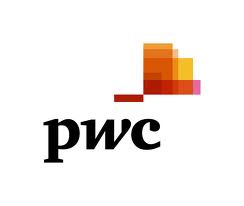Learning 2.0: Bring on the Educational Technology
Learning 2.0: Bring on the Technology
Eileen Buckley is the PwC US Corporate Responsibility Senior Manager and a member of the PwC US Corporate Responsibility team and focuses much of her time on the firm’s Earn Your Future youth education initiative, including program strategy execution, student and educator outreach and continuous learning, and collaboration with select nonprofit organizations. She has been with PwC for nine years and resides in Chicago.
Due in good part to technology and global connectedness, education has taken on a new image. Massive Open Online Courses (MOOCs) have broadened access to valuable information. We can now hear from some of the greatest minds of our generation free of charge via virtual classrooms or learn algebra through digital education sites online. Because of such innovations in education, those who are able to access and personalize these resources to their advantage, and perhaps most importantly, expose themselves to a diverse and complementary mix of ideas and points of view, will have an edge over their peers.
The now ubiquitous world of digital learning has made access to high quality education easier than ever. Consider one professional who was tutoring his niece in math. As more family members needed tutoring, he began recording his lessons and posting them on the Internet. But it wasn’t just his family members who were drawn to the videos. The online lessons gained wide viewership, which sparked an academy containing a library of more than 3,600 tutorials that attract millions of unique viewers each month.
Organizations have even built models for one-on-one mentoring through technology. A number of nonprofits now offer virtual volunteering in which professionals can help students learn to read through an online shared program and navigate the college application process through video chat. These organizations that support virtual learning and volunteering operate both “in the cloud” and “on the ground,” with an approach that offers learning in all environments and an online tool that brings together free educational resources.
The approaches above are impressive on their own; pull them together for a blended learning approach and students are far better served by developing their independent learning skills, using technology responsibly, and having social interaction that isn’t typically present in traditional online or classroom courses.
What about mobile learning through educational apps? It’s not uncommon to see toddlers playing on iPads and teens learning new languages through mobile technology. As part of PwC’s Earn Your Future commitment to education, PwC and Junior Achievement USA recently launched Build Your Future, a mobile app that offers teens an interactive way to explore careers while becoming more financially empowered. My niece, a freshman in high school, recently gave the app a try. She chose environmental engineer for a career and the app then populated with the median salary ($78,740) and education requirements (bachelor’s degree) aligned with this choice. In the next steps, she selected her education options (she chose public, in-state with room and board costing $71,440) and payment options, including money from parents, scholarships, wages and other, to learn it would cost her $7,760. After reviewing this information, she clicked a button to calculate her ROI score, which noted her educational and career choices will likely result in a successful return, positioning her to pay off her education in a timely manner while building future financial security.
The app won’t give my niece everything she needs to prepare for life after high school, but it will serve as one tool that offers valuable information unlike knowledge she’ll obtain in her classroom.
As with anything in our society, there are a variety of opinions on how technology and digital devices should be integrated with education. But I believe many would agree that it is no longer enough to look at traditional classroom learning as the primary, or perhaps leading, outlet for education. We need to bring a mix of methods into orbit that bridge the gap between lessons and real world application in different ways and approach it with a sense of innovation and creativity. The next generation of leaders will be those who can capitalize on opportunities for learning through extraordinary experiences and innovative sources to set them apart from their peers.

